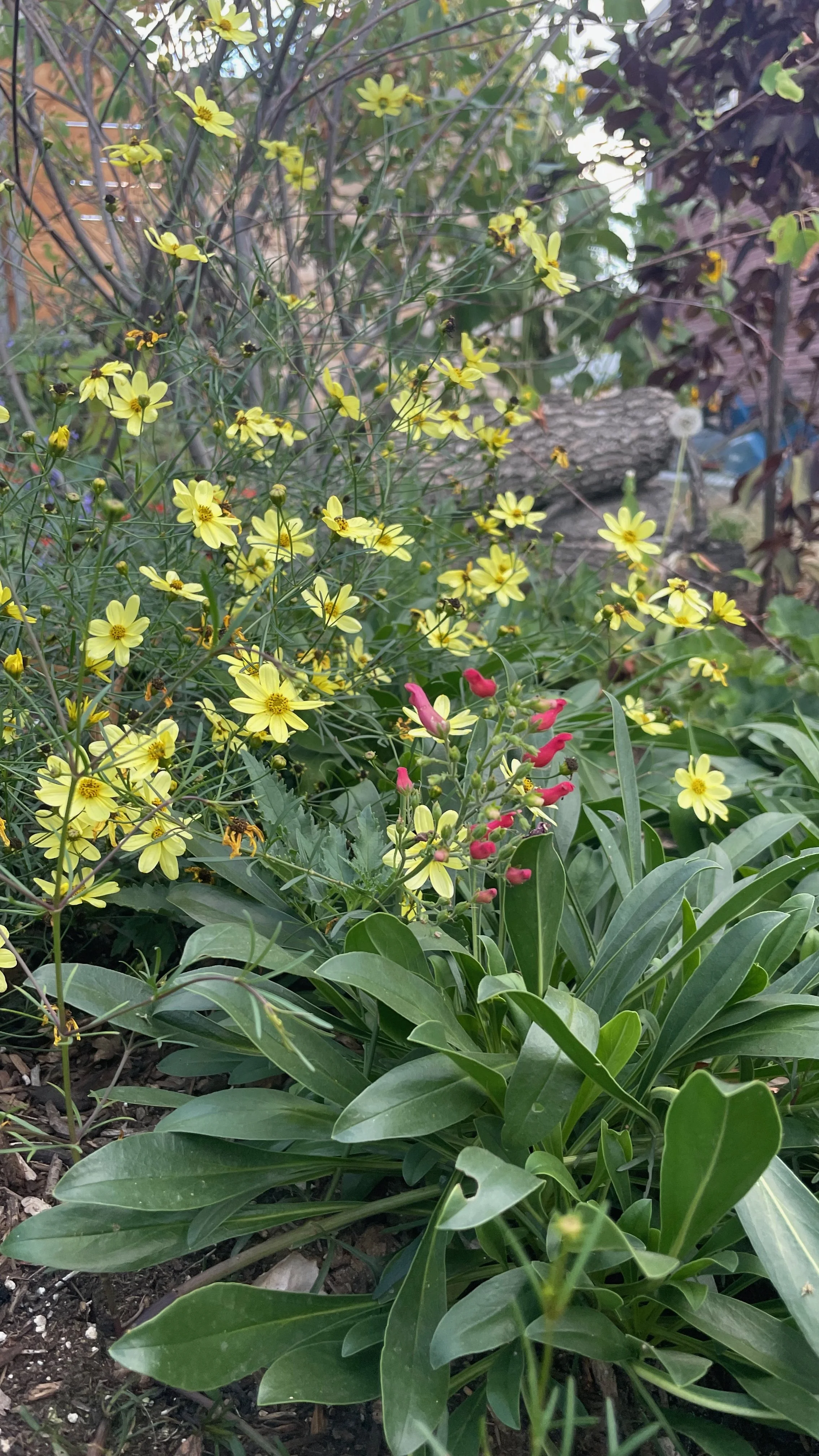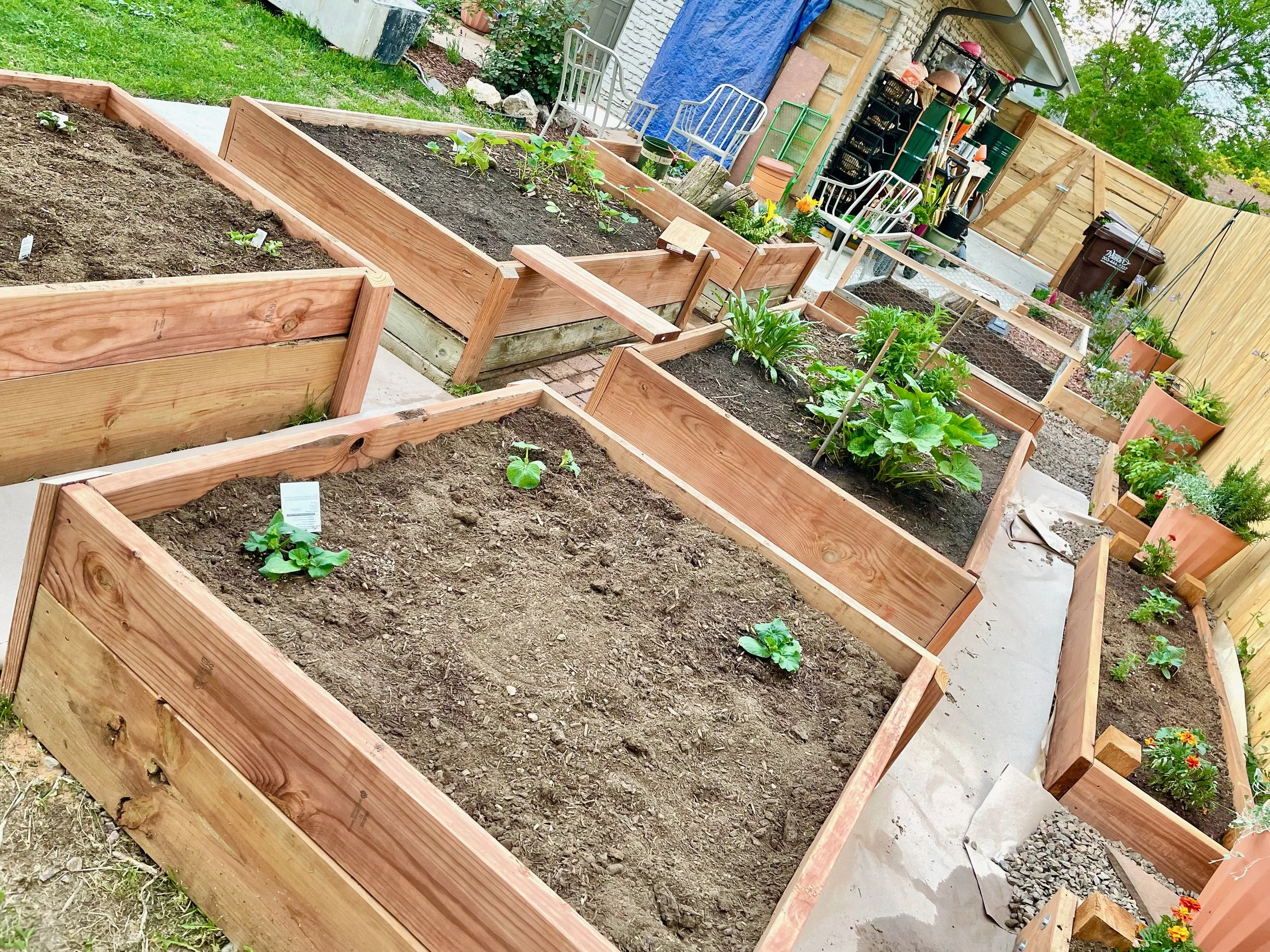Transformation
From a Yard to a Garden
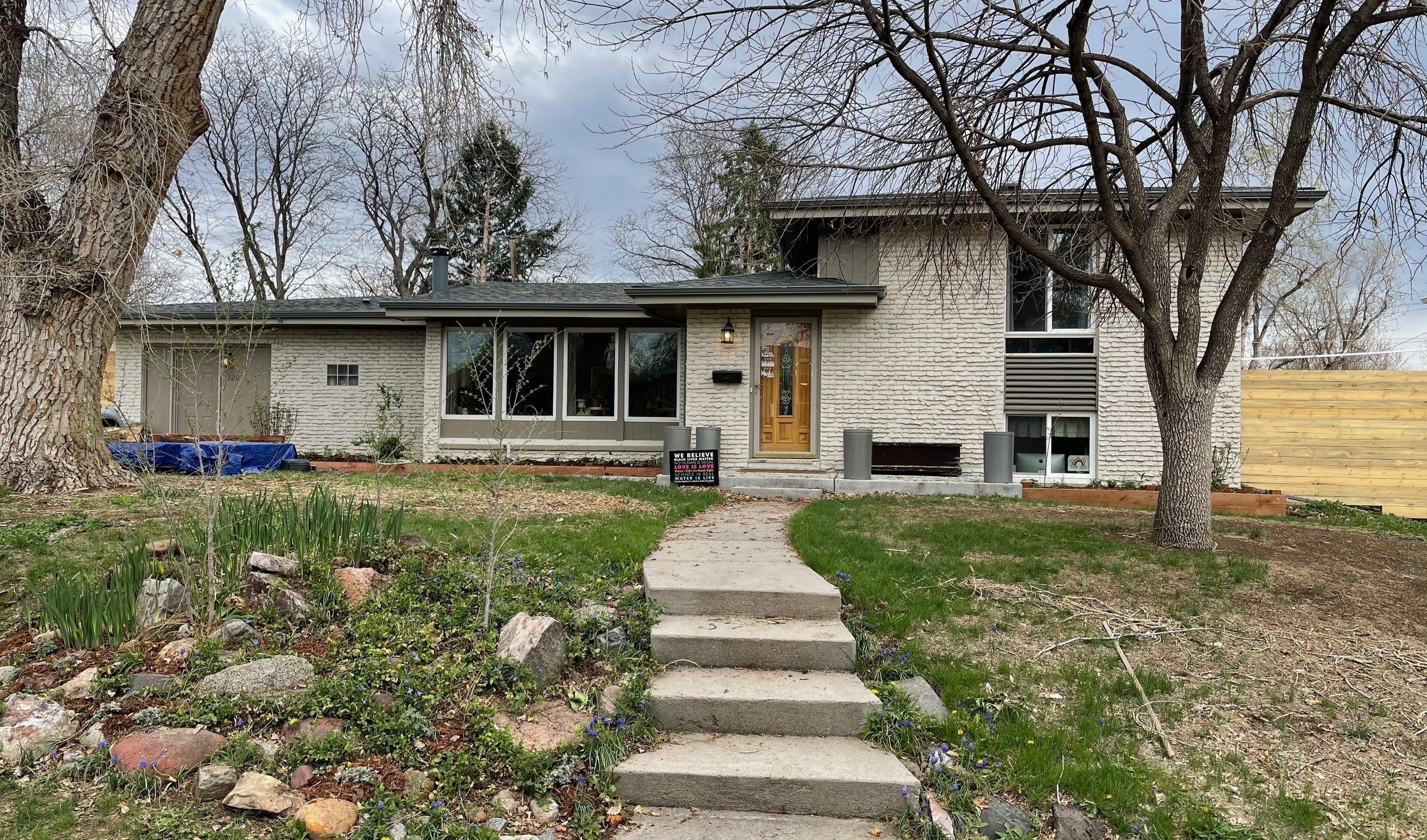
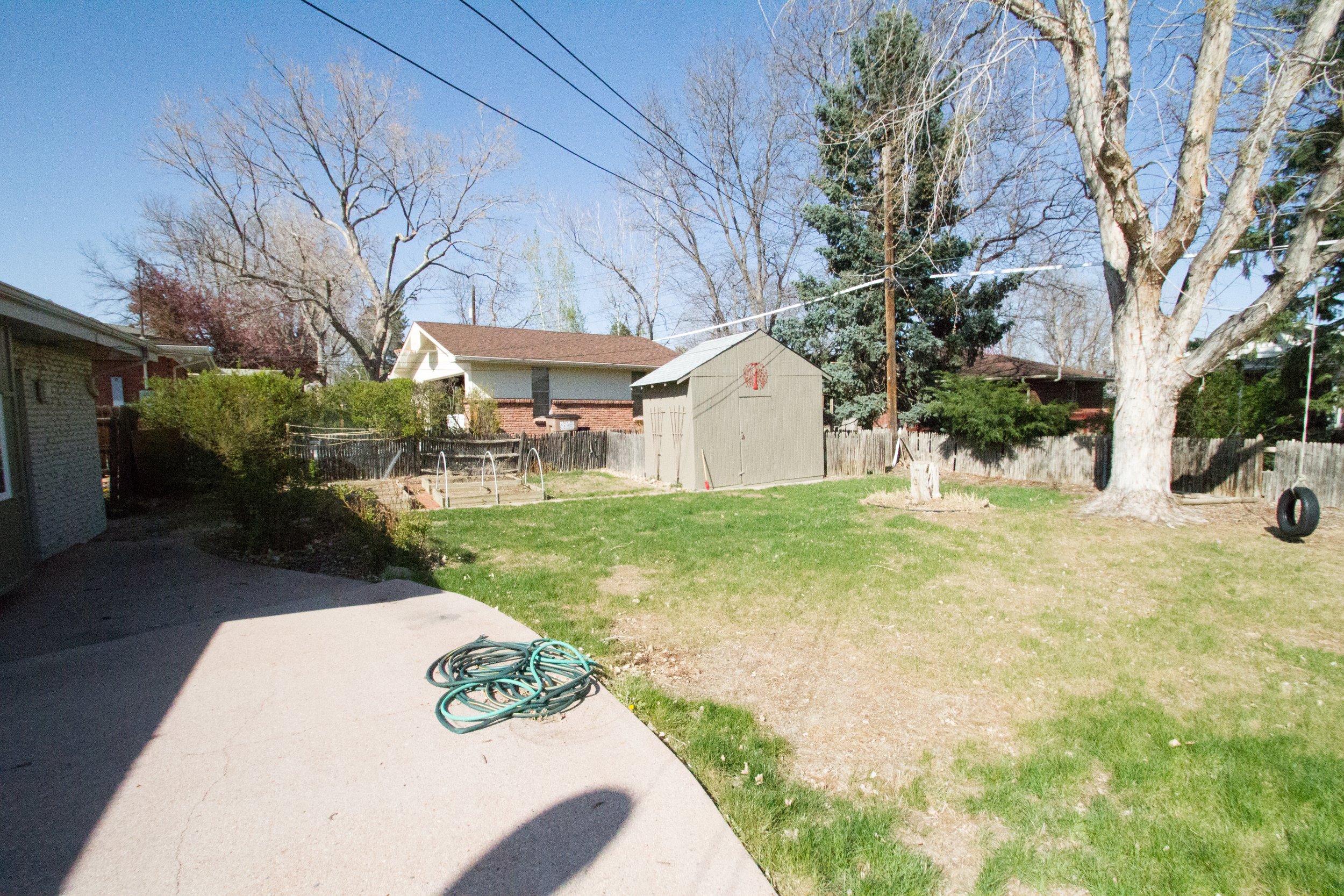
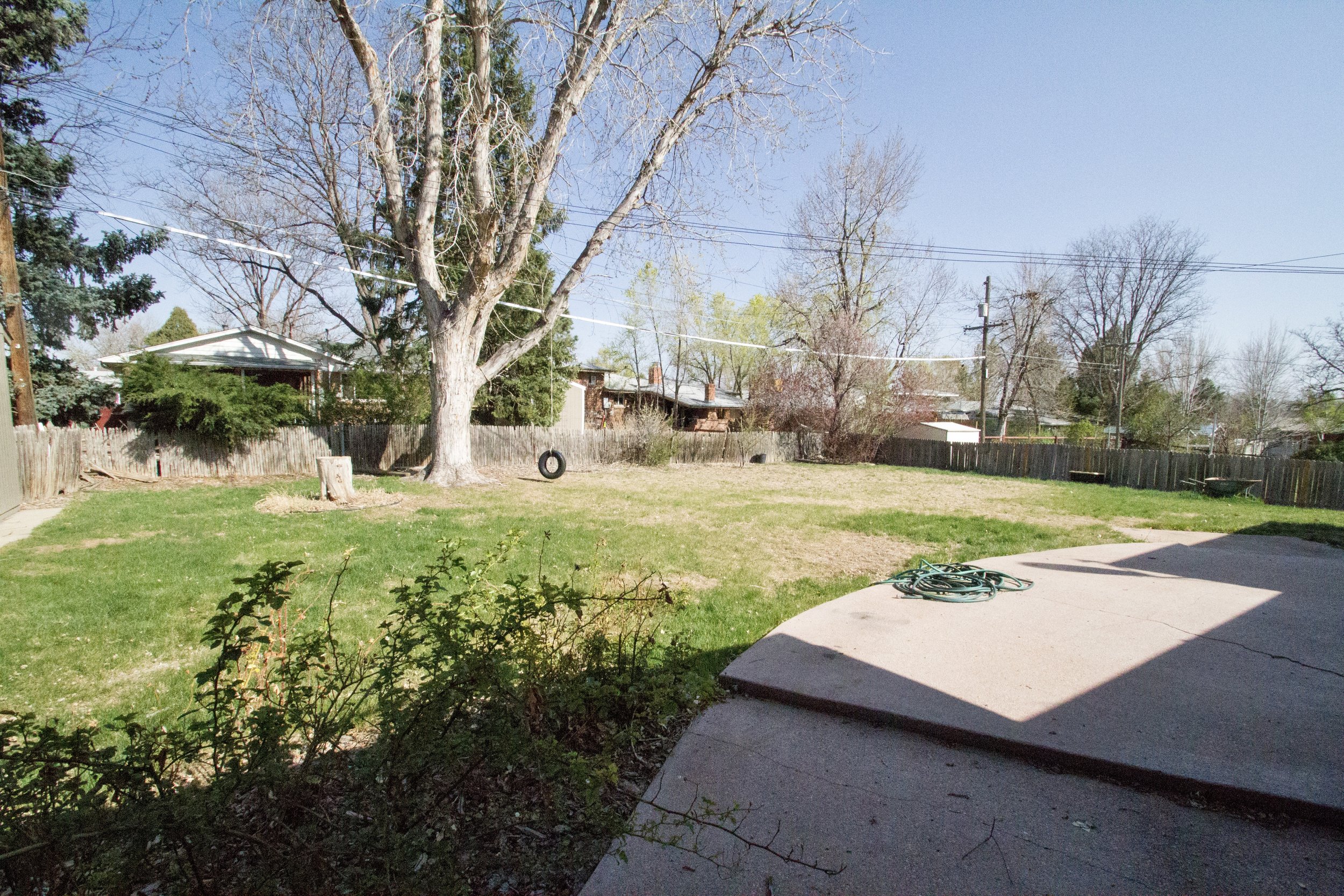
A Slow, Ongoing Transformation
My garden used to be a yard – just like most in North America. On a lot that's slightly smaller than the average suburban lot in the US, most of what was living was invasive, and frankly, most everything was dead. At some point our yard had grass. When we bought the house, that grass had mostly been replaced with invasive weeds including Field Bindweed (Convolvulus arvensis) and Knotgrass (Paspalum distichum). It had four trees, two of which were very sick, and three rose bushes – hidden in a forest of Canadian Thistle (Cirsium arvense L. Scop.). And not much else.
But it was a yard. And like the word "yard" it was passive. A noun. It sat there.
We bought this house in the winter, and maybe if it had been summer and it had been clear just how bad the land was, we would have bought elsewhere. But had we done so, I would have missed a pretty big opportunity.
My neighbors hoped we would maintain our yard like they do. They hoped we would cultivate lush expanses of green grass with a few decorative plants tucked in around the edges. They hoped our yard would come to look like their yards – clipped, indistinct, sterile, but green from spring to late fall.
Americans love their yards. We have more than 40 million acres of lawn across the United States, and we spend enormous resources to keep these lawns green. We created HOA rules that enforce pristine, green norms – even in drought-stricken areas where irrigating lawns can account for more than 70% of a city's water usage. Our lawns use the equivalent of 200 gallons of drinking water per person per day across the country.
But water isn't the only resource spent to farm this crop. To grow lawns across this acreage – approximately the size of the state of Texas – turf grass – almost always invasive, exotic species – also requires fossil fuels, fertilizers, and our most precious resource: time. We use 800 million gallons of gasoline to power gas-fueled lawn mowers and leaf blowers. The average American spends 16 days of their life mowing their lawn. Nearly 80 million pounds of pesticides and 90 million pounds of chemical fertilizers are poured onto our lawns annually – nearly ten times the rate of application in commercial agriculture.
Faced with this enormous expenditure of resources and the fact that our yard does not have a sprinkler system, I chose a different route – one which my neighbors did not expect or understand.
Over time, I started to garden my yard.
Start Small and Build
Garden is a great word. It's both noun and verb. It's both place and action. And it's alive. And here's the transformative power of verbs. Gardening my yard transformed it from a dead, passive thing into a living place. It transformed from a noun into a verb. It transformed from a place I was separated from – out there – into an action – something our family does, together.
Our first steps in this transformative process were quite small. Weeding out the existing rose bed. Reclaiming the four long-abandoned raised beds – raising them up and filling them with some new soil. Reestablishing a small shade bed and adding a few flowering plants. Starting a small compost pile. We began growing just a few vegetables and a few flowers.
As I started to clean and clear and work with the soil, the proverbial scales fell from my eyes. I could see just how dead and empty our land had become – the result of decades of neglect, inadequate water, and misguided fits and starts.
But I could also see the potential.
Colorado's Front Range is a beautiful place. We sit at the base of the Rocky Mountains – the Backbone of the World. Our home occupies what used to be prairie. The historical homeland of the Ute peoples. It was also the homeland of foxes, elk, wolves, bison, rabbits, snakes, quail, prairie chickens, Golden Eagles, prairie dogs. This land used to provide habitat for insects and birds by the millions, refuge for migrations big and small.
But since the late 1800's the land has been conquered, reclaimed, repurposed. First as farmland. Then as suburbia. And as our home, it was no longer connected to its past. The land had become sterile and empty.
How to Garden a Yard
Ours is a patch of land smaller than the average suburban lot. And it isn't connected to open space. It is surrounded by other smaller-than-average suburban lots. So rewilding – a process by which land is restored to its original use – simply isn't practical. I can't begin to approximate a postage stamp prairie ecosystem here.
But I can give it a Wild Revival. I can garden this piece of land with and for the wildlife nearby so that it becomes a safe habitat, a waystation for some, a refuge for others. I can plant for pollinators and insects – inviting in all of the creepy crawlers, the flutterers and flyers – and those that eat them, too. I can stack logs and chop and drop to make ground cover for the tiniest. And I can encourage decomposition, enriching the soil and supporting microbial life – possibly the secret to all gardening success in the end.
I can plant native plants – Echinaceas, Solidagos, Milkweeds, Achilleas, Aquilegias – plants for caterpillars to chomp, plants for nectar and pollen, plants for cover and foraging. Plants for eating and breeding and nesting and burrowing.
I also plant non-native plants. There are some that I just love like Dahlias – I grow them for myself, and I'm honest about that. I also grow some vegetables and herbs. I have a family to feed, afterall. And not every square inch needs to be in service to nature. But achieving a balance has benefitted every plant in the garden. My native plants support the native pollinators who also enjoy the nectar from my tomato plants, for example.
And we do have grassy areas, but they aren't the water-hungry monocultures of most lawns. We have a patch of Achillea and clover in the front – a trimmed contrast to the wildness of the Wildlife Garden. And in the back we have a small DogTuff lawn, immune to the traffic of dogs and kids. But the scale and proportions are such that both areas provide just what we need – not just the default of a yard.
When we took down two of our four original trees – a sugar maple that was dying and an Ash so badly pruned that it was splitting in two – we repurposed the logs and branches and used them to create nooks and crannies and habitat into which insects and mice and birds almost immediately moved in. We left the main trunk of the maple tree standing. It is now a highrise habitat for a big squirrel nest as well as Northern Flickers, Downy Woodpeckers, and White-breasted Nuthatches who have made holes in the wood looking for insects to eat as well as places to nest.
We also have watched Pigeon Tremex Horntail and Giant Ichneumon Wasps lay their eggs under the bark of the maple tree. When the Pigeon Tremex Horntail lays her eggs under the tree's bark, she also deposits white rot fungus – a fungal food source for her larvae and an accelerant of the tree's decomposition. The Ichneumon Wasp detects the presence of Pigeon Tremex Horntail larvae, and lays her eggs nearby. Her larvae eat the larvae of the Pigeon Tremex Horntails – a gristly feast under the bark of the tree, but all part of the decomposition cycle of a rare few hardwood trees. And all easily on display while sitting on our tree swing.
I garden for all of this – life, death, growth, decay, abundance, scarcity.
The richness of this Wild Revival runs deep and has transformed our family life. We have built habitat for creatures as well as for humans. A Shade House which makes a cool respite on a hot day. A deck offering fabulous bird watching vantage points and a place to watch a movie outside. A greenhouse where I can start seedlings while the snow still flies. We spend more time outside than in. More time together. More time watching and learning and enjoying.
When we had a yard, the natural world was something away. It was a mountain trail where we hiked or a trip to Rocky Mountain National Park. It was a visit to a waterfall or a drive through the foothills. But now nature is just outside the door. It's the flock of Nuthatches harvesting seeds in the Cutting Garden. It's the bumblebees feasting on the sunflower blossoms. It's the mice scurrying through the undergrowth. And the rabbits burrowing under the deck.
Yes, sometimes the rabbits eat something I wish they wouldn't. But there is such abundance in the garden, that for the most part I don't notice. Yes, the raccoons sometimes create havoc, but they have babies to feed, too. Yes, I lost three apple trees to voles. But winter is long, and they were hungry. So I will have to just try again in the spring.
Now we have a garden. We steward a garden. We garden. We aAnd we have embraced the nouns and the verbs. We celebrate the bumblebees. We didn't have them before, but here's the thing about a garden: if you build it, they will come! The bees, the bugs, the wasps, the mice and voles and so many birds – they will come! A yard is of very little use to them. But a garden is a place to congregate, to mate, to feast, to reproduce, and to thrive.
So, join me in a Wild Revival, and replace your YARD with a GARDEN.



